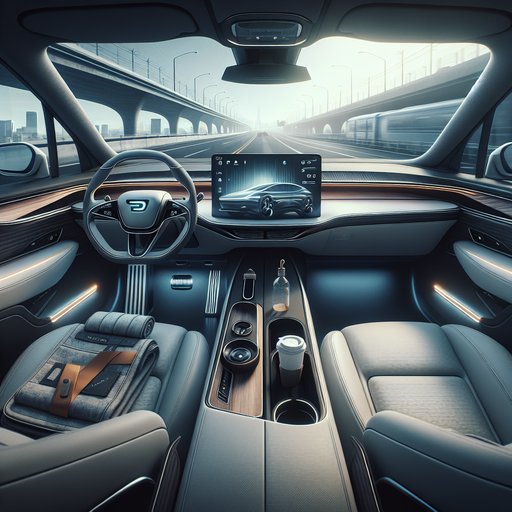
We spent a week living with BMW’s new electric 5 Series to focus on what premium buyers care about most: interior quality, onboard technology, and day-to-day comfort. Here’s how the i5 eDrive40’s cabin stacks up after real commuting, highway miles, and family duty.
Our test car was a 2024 BMW i5 eDrive40 (single-motor RWD, 335 hp, 295 lb-ft) with the Premium Package, Veganza upholstery, open-pore wood trim, and the optional Bowers & Wilkins audio. The curved display pairs a 12.3-inch instrument cluster with a 14.9-inch central touchscreen running iDrive 8.5. EPA range is up to 295 miles depending on wheel/tire spec. Testing covered 620 miles over seven days: dense city traffic, two 200-mile highway loops, and rough secondary roads.
Ambient temps ranged from 48–72°F. Our car rode on 19-inch all-season tires. We logged observations with a calibrated SPL meter for cabin noise, timed HVAC warm-up, and evaluated seating over multiple three-hour stints. Material quality is convincingly premium.
The Veganza (synthetic) feels closer to soft Nappa than vinyl, with tight stitch work and consistent grain. Panel alignment is even and silent over potholes—no buzzes or creaks emerged. The backlit Interaction Bar adds subtle ambient glow without glare, and the open-pore wood looks and feels authentic. Storage is thoughtfully laid out: a cooled wireless charging pad that actually maintains phone temperature, deep door bins, and a configurable center console.
Rear accommodations are generous for two adults; the center tunnel still intrudes for a third. Trunk space is a useful 17.3 cu ft with a wide opening. Tech integration is strong. iDrive 8.5 is quicker than earlier versions and the home screen tiles reduce digging through menus.
Wireless Apple CarPlay/Android Auto stayed rock-solid in our test (no dropouts in a week), and AR-enhanced navigation is genuinely helpful at complex junctions. The available Highway Assistant (market dependent) handled hands-free cruising on mapped interstate segments with reliable lane centering and attentive-driver monitoring. The optional Bowers & Wilkins system delivers clean dynamics, wide staging, and convincing Dolby Atmos mixes without boominess; the standard HiFi is good, but this upgrade is worth it for frequent listeners. Downsides: climate and seat functions are a layer deep, and the learning curve remains steeper than in some rivals.
Comfort impresses. The multi-contour front seats provide long-distance support with effective lumbar and adjustable upper backrest; ventilation is quiet and massage has subtle, useful programs. Ride quality on 19s is supple, filtering sharp edges without float, and body motions are well controlled. We measured 66–67 dBA at 70 mph on smooth asphalt and 69–70 dBA on coarse surfaces—competitive for the class.
Dual-pane acoustic glass and good aero sealing help, and crosswinds didn’t introduce whistling. The heat pump brings cabin temp from 50°F to 70°F in about six minutes, and rear passengers get dedicated vents and two USB-C ports. Overall, the i5 eDrive40’s cabin meets premium expectations with convincing materials, cohesive ambient design, and a mature tech suite. It’s at its best with smaller wheels and the upgraded audio; frequent travelers should add ventilated/massaging seats.
If you prefer simpler interfaces, Mercedes’ E-Class may feel more intuitive, but for blend-of-tech refinement and quiet comfort, the i5 is a top-tier choice.












